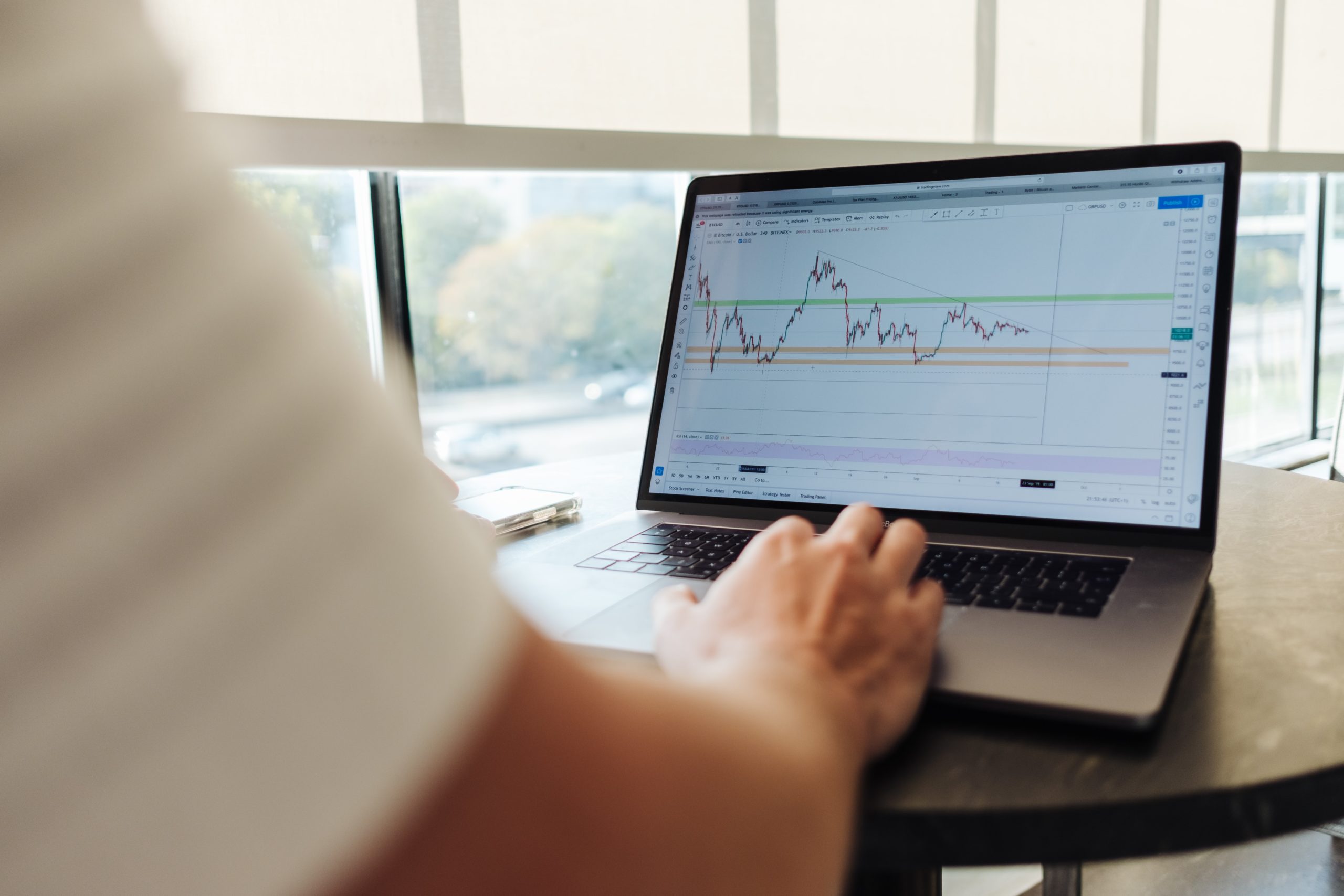 View Winners →
View Winners → How Did Online Trading Come to Be?

Courtesy photo by Jason Briscoe on Unsplash
How did we get from having to phone a licensed broker in order to place a trade to where we are now? Today, anyone with a computer or smart phone can spend less than a minute and make a transaction in the securities market. Plus, they can check their accounts, view portfolios, examine profitability stats for this week vs last week, set their accounts to auto trade, and do dozens of other things that were unheard of just a few decades ago.
Here’s a brief look at how modern platforms developed, why it makes sense to seek out a regulated service provider, and how firms have evolved in terms of their marketing campaigns. Everything has changed so much. Mostly, from a customer’s point of view, the changes have been for the good. Nowadays, anyone can quickly open a trading account, learn the basics of how to place orders, and get busy making a profit. Commissions and fees are low or non-existent. Applying technical or fundamental analysis is simple. Account minimums are low and you can even choose risk-management tools that protect your capital from unexpected losses. Here’s what every prospective trader should know about the history of electronic transactions, regulation of firms, and how companies use marketing to add to their customer base.
Trading Platforms
All securities trading was once done manually, or by people phoning their brokers to place orders. In the 1970s, this all changed when several of the large exchanges allowed ECNs (electronic communication networks) to handle some automated trades. These systems were slow and did not give confirmation immediately. It was hard to see current prices or spreads. Still, it was light years ahead of the manual approach. Over time, and as the reach of the internet grew, these systems allowed prices to be streamed live. The most important thing they did was to give customers access to instantaneous order execution. Companies began offering online only accounts and millions of people signed on. By the early 2000s, the securities markets were open to virtually anyone who wanted to take part.
Sophistication followed, in terms of robotic capabilities, automated transactions, client GUIs (graphical user interfaces), and high-end electronic platforms. By 2005, there were numerous platforms for clients to choose from, instead of just one per brokerage. Today, when a person opens an account with one of the top-tier brokerage firms online, the choices are impressively huge. You essentially get to choose your preferred platform, the kinds of instruments you want to trade, how often you want to enter into transactions, and whether you want to use some of the risk-avoidance techniques. Additionally, modern providers offer automated buying and selling, social trading in which newcomers can replicate the activity of seasoned professionals, and more. Probably the most advantageous factor for individual investors is that commissions and fees with reputable, regulated brokers tend to be very low.
Marketing
In the early days of electronic trading, firms worked hard to bring in new clients. They did it with traditional advertising campaigns, offers of bonuses, free gifts, and other giveaway-type incentives. Most people probably remember a time when banks gave toasters to new customers as a welcome gift. The securities industry was the same way. Firms basically offered freebies to get people to sign on. Later, the incentives grew in sophistication to include access to special reports, insider tips, and exclusive materials like books and white papers on how to earn money in the securities market. The current state of affairs is even more encouraging, with some of the top firms adding risk limitation insurance to their menu of services and extras. It’s not really insurance in the typical meaning of that term, but it’s a beneficial thing for anyone who wants to add a layer of safety and security to their account. To cite one example, AvaTrade offers a forex risk avoidance tool that includes a hedging feature. It takes the concept to full-auto level, allowing traders the advantages of an unprecedented level of risk management. For new or experienced forex enthusiasts, features like these make a big difference.
Regulation
Once the number of service providers began to flourish, in the early 2000s, various nations began instituting strict regulations about who could and couldn’t do business. Still, there are many unregulated firms that operate from offshore locations. When consumers choose to work with a regulated entity, they get the peace of mind in knowing that their money is protected if the firm goes out of business, just to note one example. Additionally, regulated brokerages can’t abuse clients, steal their money, or ignore the rules of the various regulatory bodies.












































































































